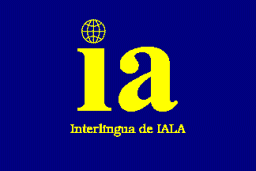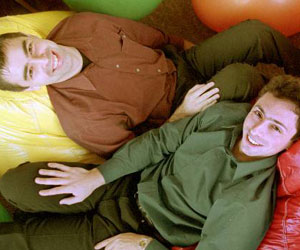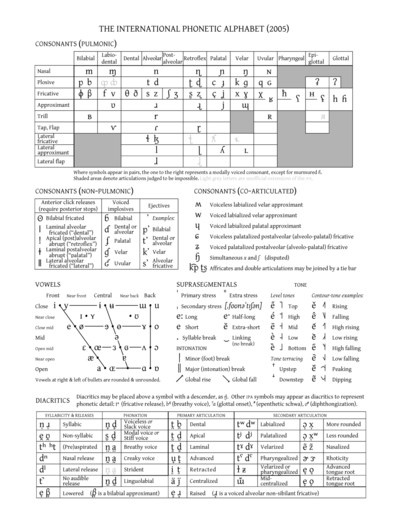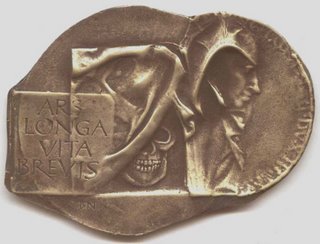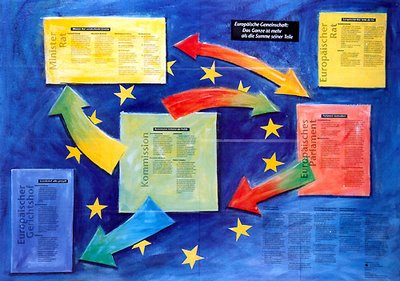Ni artikali: Na, Ni et UnNa/Ni: The definite articles "Na" and "Ni" derive from the Irish articles “An” (sgl.) and “Na” (pl.). In Iorpún “Na” means “the” (sgl.) and “Ni” “the” (pl.). There is no distinction between f, m and n, i.e. na fem – ni femi, na patar – ni patari and na strat – ni strati.
Un: The indefinite article is “Un” and there is no distinction between f, m and n, i.e. un fem, un patar and un strat.
Ni casi d’IorpúnoqNominativUn gan - Na gan – Ni gani
Un animal - N’animal – Ni animali
Un car – Na car – Ni cari
Un car - Tu cari
Genetiv (d’ -oq/-iq)Na flor d’montanoq (sgl.)
Ni colori d’fiziq (pl.)
Dativ (con, por et laq)Con vin/vini
Por púpal/púpali
Laq brodar/brodari
Akusativ (t’)Est fres na cat t’rat – Ist fres ni cati t’rati
Est es na uman t’múl – Ist es ni umani t’múli
Est es Tom t'múli tu (= tu múli)
LokativI faz/fazi
In automobil/automobili (“In” only used before “a-, e-, i-, o- and u-“ words)
In hus/husi (“In” only used before “h-“ words, vive la France :-)
TemporativAy zabad – Ay zabadi
As tim - As timi
Singular et Plural
Nominativ (-i):As most of the words in Iorpún end with a consonant it is easy to add the plural suffix –i:
Un/Na stat – Ni stati
Un/N’akv – Ni akvi
Un taxi/na taxi - ni taxi
Genetiv (d -oq, -iq or –qi):Ni tabali d’baroq (sgl.)
Ni vali d’landiq (pl.)
Ni banqi d’parq (sgl.) et ni portali d’parqi (pl.)
Na danz d’paradúqi (pl.)
Dativ/Akusativ/Lokativ/Temporativ (-i)D: Con matar – Con matari
A: T’castal – T’castali
L: I zatox – I zatoxi
T: Ay tim d’soloq – Ay timi d’soloq
PronounciationIorpún allows the speaker to pronounce a word in a way that is familiar to her/his own language (but keeping a unique spelling at the same time), i.e. Na faz – The face:
English: Na feıs
German: Na fa∫
French: Na fas
C, K et QC is the K in the beginning: con-vil-ca’ud!
K is the K in the middle: n’Akt (except Genetiv plural, i.e. ni dagi d’vúqi)
Q is the K in the end: na Iraq
Reason: The “K” sound is not equally represented in the European languages. Therefore a combination is needed to reflect the varieties of the “K” sound so different European language groups find it easier to accept Iorpún.
Ni dzokari
“Z”Pronounced as “SH” (IPA "∫") it allows the speaker to use it as a soft “SH”, “TS” or even “S” in all its variety, i.e. na zabad, na zatox, na danz.
“Ú”Pronounced as “EE” (IPA "I:") it is replacing “-Y” in English, “-IE” in German and French, i.e. n’apatú, na farmazú.
„X“Pronounced as „CH“ (IPA "X") as in „Loch“ it allows the speaker to change the sound „CH“ to „K“ or “KS”, i.e. na monarxú, na export, na taxi (ni taxi pl.):
English: The monarchy, the export, the taxi
German: Die Monarchie, der Export, das Taxi
French: La monarchie, l’export, le taxi
DikzonarNa dikzonar - The dictionary
N'advantadz - The advantage
Na lingux - The language
Na part - The part
N'artikal - The article
Na - The (sgl)
Ni - The (pl.)
Un - A, an
Na fem - The woman
Na patar - The father
Na strat - The street
Na cas - The case
Na nominativ - The nominative
Na genetiv - The genetive
Na dativ - The dative
N'akusativ - The accusative
Na lokativ - The lokative (the case of place)
Na temporativ - The temporative (the case of time)
Na gan - The garden
N'animal - The animal
Na car - The car
Tu - Two
Na flor - The flower
Na montan - The mountain
Na color - The colour
Na fiz/ni fizi - The fish (sgl.)/the fish (pl.)
Na vin - The wine
Na púpal/ni púpali - The people (sgl.)/(Mor) people (pl.)
Na folq - The peoples
Na brodar - The brother
Est fres - Eat (sgl.) ("fres" only with animals)
Ist fres - Eat (pl.)
Est es - Eat (sgl.) ("es" with humans)
Ist es - Eat (pl.)
Na cat - The cat
Na rat - The rat
Na uman - The human (being)
Na múl - The meal
Na faz - The face
N'automobil - The automobile
Na hus - The house
Na zabad - The sabbath/Saturday
Na stat - The state
N'akv - The water
Na bar - The bar/cafe
Na tabal - The table
Na land - The land
Na val - The valley
Na parq - The park
Na banq - The bank
Na portal - The gate/portal
Na paradú - The paradies
Na danz - The dance
Na matar - The mother
Na castal - The castle
Na zatox - The château
Na tim d'soloq - The summer
Na tim - The time
Na sol - The sun
Na sul - The soul
con-vil-ca'ud - Please (Not "welcome", meaning "with-will-your" = "With your will")
N'akt - The akt
Na dag - The day
Na vúq - The week
Na Iraq - The Iraq
Na dzokar - the joker
N'apatú - The apathy
Na farmazú - The pharmacy
Na monarxú - The monarchy
Na export - The export
Na taxi/ni taxi - the taxi/the taxis
Na exampal - The example
Na informazon – The information
Mor informazoni - More information(s :-)
To skrib/skriv – To write
Na skol – The school
Go/Gi – Imperative, i.e.Sgl.: Go skrib un not to Paris, Tom, con-vil-ca'ud! – Write a note to Paris, Tom, please!
Pl.: Gi contact t’polizú, Tom et Sandra, con-vil-ca'y! – Contact the police, Tom and Sandra, please!
Con - With
Por - For
Et - And
Or - Or
I/In - In
Ay - On/at/in (only in connection with time)
As – Through/During (only in connection with time)
Is – Through (only in connection with place)
I.e. (por exampal) - For example (i.e.)
Laq - about ("on" a subject, i.e. Ist parl Tom et Sandra laq Paris - Tom and Sandra talk about Paris)
Por mor informazoni laq Iorpún go skrib to:
Skol d'Iorpúnoq, 1 Eaton Square, Monkstown, Co. Dublin, Éire or go contakt
iorpun@gmail.com, con-vil-ca'ud!





